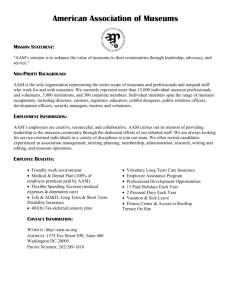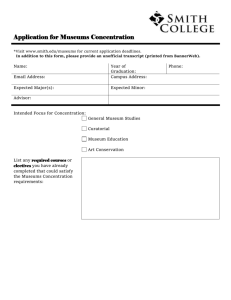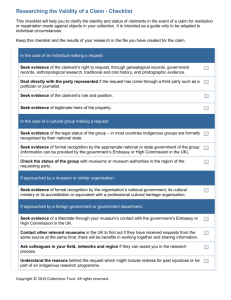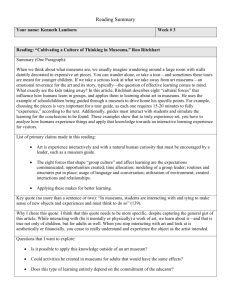questions & concerns re: um practices
advertisement
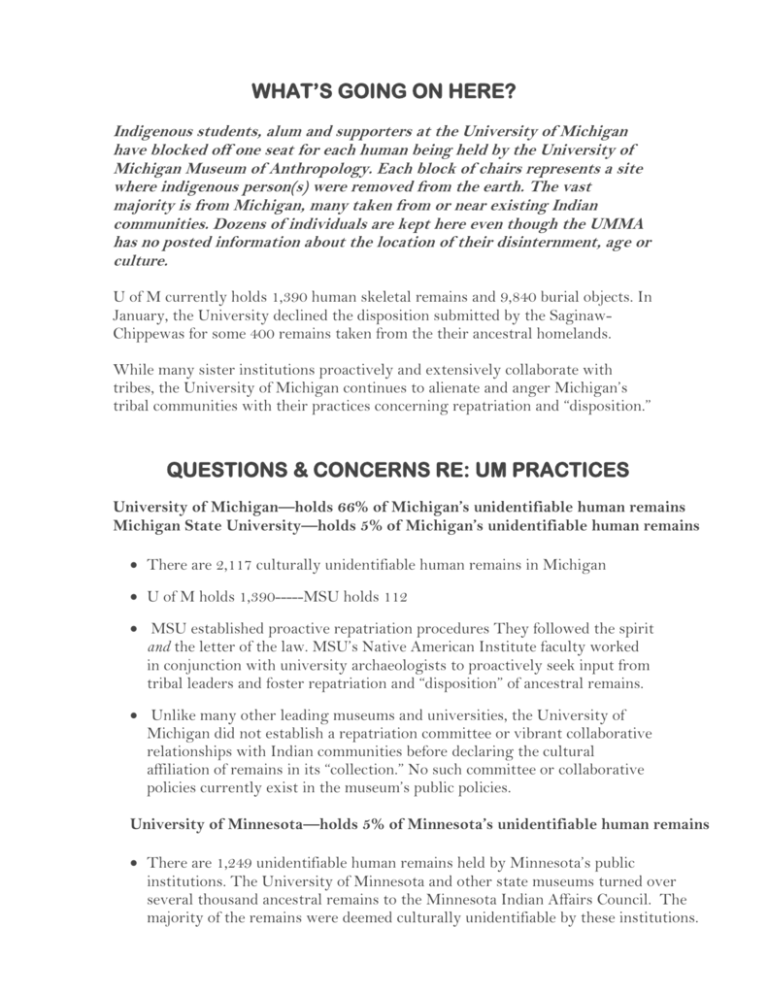
WHAT’S GOING ON HERE? Indigenous students, alum and supporters at the University of Michigan have blocked off one seat for each human being held by the University of Michigan Museum of Anthropology. Each block of chairs represents a site where indigenous person(s) were removed from the earth. The vast majority is from Michigan, many taken from or near existing Indian communities. Dozens of individuals are kept here even though the UMMA has no posted information about the location of their disinternment, age or culture. U of M currently holds 1,390 human skeletal remains and 9,840 burial objects. In January, the University declined the disposition submitted by the SaginawChippewas for some 400 remains taken from the their ancestral homelands. While many sister institutions proactively and extensively collaborate with tribes, the University of Michigan continues to alienate and anger Michigan’s tribal communities with their practices concerning repatriation and “disposition.” QUESTIONS & CONCERNS RE: UM PRACTICES University of Michigan—holds 66% of Michigan’s unidentifiable human remains Michigan State University—holds 5% of Michigan’s unidentifiable human remains There are 2,117 culturally unidentifiable human remains in Michigan U of M holds 1,390-----MSU holds 112 MSU established proactive repatriation procedures They followed the spirit and the letter of the law. MSU’s Native American Institute faculty worked in conjunction with university archaeologists to proactively seek input from tribal leaders and foster repatriation and “disposition” of ancestral remains. Unlike many other leading museums and universities, the University of Michigan did not establish a repatriation committee or vibrant collaborative relationships with Indian communities before declaring the cultural affiliation of remains in its “collection.” No such committee or collaborative policies currently exist in the museum’s public policies. University of Minnesota—holds 5% of Minnesota’s unidentifiable human remains There are 1,249 unidentifiable human remains held by Minnesota’s public institutions. The University of Minnesota and other state museums turned over several thousand ancestral remains to the Minnesota Indian Affairs Council. The majority of the remains were deemed culturally unidentifiable by these institutions. 1) Though new NAGPRA regulations on “culturally unidentifiable” remains are in the works, they've been in the works for years. In the meantime, thousands of "unidentifiable" remains have been given back to tribes by university museums and other public institutions. 2) U of M has set a precedent of “dispossessing” "unidentifiable" remains. In 2006, they returned “unidentifiable” remains from Whitefish River, Ontario. According to repatriation officers at Michigan’s Little River and Little Traverse Bay bands, the university added “unidentifiable” ancestors when they handed over “affiliated” remains. 3) If the remains are deemed “unidentifiable,” are they of any research value? What can scholars say about bones that are claimed to have no identifiable cultural affiliation? NAGPRA prohibits denying affiliation because remains are desired for research unless it's a project of significant benefit to the U.S. This provision has never been used. 4) The University of Michigan Museum of Anthropology is not accredited by the American Association of Museums. The UM Museum of Art and Kelsey Museum of Archaeology are. Why isn’t the UMMA accredited? How would accreditation affect their accountability? As a public institution started on a tribal land grant, is the Museum of Archaeology not particularly bound to such ethics and professionalism? BASIC HUMAN RIGHTS: In 1990. the Native American Graves Protection and Repatriation Act passed into law. NAGPRA is, first and foremost, human rights legislation. It was enacted to help protect the innate rights of indigenous peoples to restore and protect their dead and their burial items. According to Sen. Daniel Inouye, who advocated in favor of NAGPRA before the Senate, the law was created to protect the “civil rights” of indigenous peoples. “(NAGPRA) is not about the validity of museums or the value of scientific inquiry. Rather, it is about human rights…. ”(136 Cong. Rec. S17174, October 26, 1990.) This is a global problem. The world community has identified it as an irrefutable and basic human right. Last September, the United Nations passed the Declaration on the Rights of Indigenous Peoples. Article 12 states: 1. Indigenous peoples have the right to …the use and control of their ceremonial objects; and the right to the repatriation of their human remains. 2. States shall seek to enable the access and/or repatriation of ceremonial objects and human remains in their possession through fair, transparent and effective mechanisms developed in conjunction with indigenous peoples concerned. HOW DOES THE UMMA HOLD UP TO AMERICAN ASSOCIATION OF MUSEUMS STANDARDS? Below are excerpts from the American Association of Museums requirements and Code of Ethics. The code was adopted in the early 1990s and revised a decade ago. According to the AAM website, “stewardship of collections entails the highest public trust and carries with it the presumption of rightful ownership, permanence, care, documentation, accessibility, and responsible disposal.” (www.aam-us.org) Thus, the museum ensures that: collections in its custody support its mission and public trust responsibilities collections in its custody are accounted for and documented access to the collections and related information is permitted and regulated acquisition, disposal, and loan activities are conducted in a manner that respects the protection and preservation of natural and cultural resources and discourages illicit trade in such materials acquisition, disposal, and loan activities conform to its mission and public trust responsibilities the unique and special nature of human remains and funerary and sacred objects is recognized as the basis of all decisions concerning such collections competing claims of ownership that may be asserted in connection with objects in its custody should be handled openly, seriously, responsively and with respect for the dignity of all parties involved. This Code of Ethics for Museums takes that compliance as given. But legal standards are a minimum. Museums and those responsible for them must do more than avoid legal liability, they must take affirmative steps to maintain their integrity so as to warrant public confidence. They must act not only legally but also ethically. This Code of Ethics for Museums, therefore, outlines ethical standards that frequently exceed legal minimums. AAM governance guidelines require that museums “ensure that all these resources support the museum's mission, respond to the pluralism of society, and respect the diversity of the natural and cultural common wealth.” “Each nonprofit museum member of the American Association of Museums should subscribe to the AAM Code of Ethics for Museums. Subsequently, these museums should set about framing their own institutional codes of ethics, which should be in conformance with the AAM code and should expand on it through the elaboration of specific practices.”

